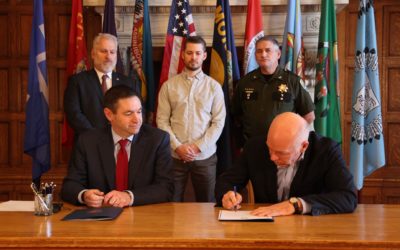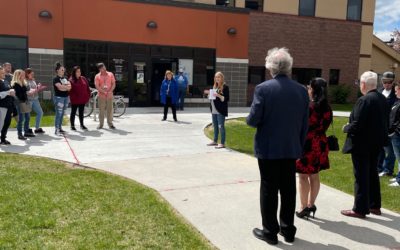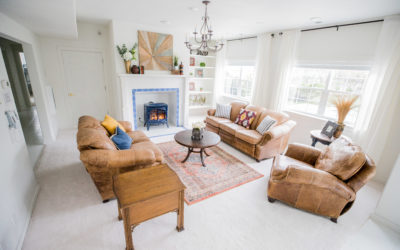Written by Holly Netz
Originally Published in Simply Local Magazine
As I prepare to meet Britney Higgs, my thoughts are filled with a beautiful millennial wife and mother, a woman of strong faith, and a level of goodness that makes me question my life choices. I consider myself a good person, but I am certainly not someone that does “life-changing” work daily. Britney is.
Britney and Sammy Higgs founded the HER Campaign in 2016. It is a local organization dedicated to the growth of safehouses and healing for women that have been victims of sexual exploitation.
I asked Britney how her journey into the world of rescuing these women began. At the time, Britney had a friend who was doing ministry in India’s red-light district. Upon her return, they met for coffee and Britney shares, “What she told me broke me in a way that I hadn’t been broken before.” She learned that kids are in brothels for years without seeing the light of day. She and her husband quickly realized this is not only an overseas problem; it’s an America problem; it’s a Billings problem. A filmmaker and photographer by trade, they initially decided to help by documenting these stories to raise awareness. Britney went to Iraq twice to work with women who had been sex trafficked by ISIS. The youngest girl she met was 8 years old and had been rescued just days before. These women had lost everything. They were void of dignity, self-worth, hope.
One day Britney and Sammy were walking the hills in eastern Montana, and she had a vision that they needed to start a safe house. She looked at her husband, and the words spilled from her mouth. They immediately knew that was their next step. At the time, they didn’t even really know what a safe house was. Britney recalls, “We didn’t know of anyone that did this here in the US, which spring boarded us into another two years of crazy connections and people we didn’t even know existed. One of the first phone calls we ever made was to another safe house in western Montana.” That home was using the method of bringing the women into their home/family, rather than an institution-like setting.
Fast forward, they have connected with programs all over the country, all with different models. They found an extensive program that used one-on-one programming and helped them with paperwork, programming, and the many essential tools they needed to start. The Higgs combined these resources and a family environment to form the HER Campaign.
Human Trafficking Myths Dispelled
Brittany told me the average age of the women that finally get help are in their mid-thirties and have been victims of sexual exploitation. A misconception in our society when thinking of sex trafficking is that young girls are lured in quickly or grabbed off of the streets and forced into labor. In reality, that is the exception. Most victims experienced sexual abuse as a child, and many come from the foster care system. Coming from abuse and neglect, they are lured in by someone that purports to love them. Often, traffickers are (or hire) good-looking men who know how to seek out broken girls, who have been neglected, hurt, and abused. A staggering statistic- 1 in 4 girls are suffering from sexual abuse today; these girls are plentiful and desperately seek someone to love them. Once the grooming process has been completed and the women find themselves in a sexual exploitation situation, they think their position is better than the past. The victim can think to themselves, “If my trafficker is so bad, why do I love him?” For these women, this is the only love they have known. Traffickers also instill a deep fear in their victims that they will find them if they leave.
The HER Campaign is now part of a network called the National Trafficking Sheltered Alliance. The NTSA is an alliance of safe houses across the country. For instance, a woman in Billings wouldn’t be safest in a home in Billings, so the women that go through the program here are usually from elsewhere and vice versa.
To date, the HER Campaign has successfully walked the journey of healing with 10 survivors. That was through their own home. Their goal is to have 20 safe houses in the HER network by the end of 2021.
But what does helping a survivor through the process look like?
The first 60 days are solely about basic needs. The sheer emptiness these women arrive with is staggering. Their lifestyle was usually very fast-paced, working all night and sleeping all day. Most know next to nothing of the outside world, as they were hidden from it. They come with no basic life necessities. They have no birth certificate, no ID. They need to sign up for Medicaid; most have little education and no GED. These are not things they have the capacity to do for themselves at this point. The goal is to get them into a regular daily cycle, make healthy meals, provide a room of their own, and get to a counselor to make initial assessments. The HER campaign has recently partnered with a national foundation called Rescue America that specializes in the first 60 days: the paperwork, the assessments, and more; leaving the safe house families more time to work with the women on a personal level.
After the 60 days, HER focuses on strengths-based practices. In essence, the “ball is put back in their court.” HER asks the survivor: “What are your dreams? What are the things you want to do? What are your personal goals?” This part can be overwhelming for someone that has not previously had choices. They work with the survivors to create a schedule that will allow them to build skills, confidence, a sense of normalcy, and self-empowerment. The organization has a list of partners for work, art, equine therapy, and GED programs. “We help them create a schedule and goals and guide them, but ultimately the choices are theirs,” says Britney. During these 60 days, they regularly coach and reevaluate what they want the future to look like—Daily, weekly, monthly.
Survivors are in the house for six months to a year. Sometimes they are ready at six months; sometimes it’s longer. Often, they are ready and just don’t know they are. Britney and Sammy are focused on making sure they aren’t creating a dependent environment but an independent one that allows them to know they are ready but realize they always have resources and a support system.
My brain went back to “How can I help?”. Not everyone can be a safe house. Though these safe houses are a huge focus for them, there is so much more to be done. The estimated cost to get a survivor through the program is about $10,000. Most of HER’s funding comes through monthly donations, grants, fundraisers (such as a run in October, and a dinner in February). They also have a “Merch with a Message” program, where merchandise sold on their website highlights the message to raise awareness and help fund the program.
There is so much more story to tell, but only so many words. That said, I ended the interview with a hard question.
In today’s world, we have become so divided; if someone believes X, they fall into category A, and we immediately turn our heads. The HER Campaign is heavily faith-based. Unfortunately, this can quickly turn off even some Christians, let alone the vast bulk of our society of other belief systems. I felt I had to ask her if anyone had ever challenged that portion of the program.
“Have you ever had anyone say: “Can’t you do this without it being so God-y?”
The answer was an immediate and emphatic, “YES!” from Britney, “We have had so many people say “This is great, what you are doing is wonderful, just take the faith piece out of it.”
“And you reply?…”
“This is not just a mental and physical battle; it is a spiritual one. Every girl that comes through our house, whether they have a relationship with God or not… we don’t even have to say anything to them. He shows up to them in the most miraculous ways.”
Every single girl has told us: “There has to be a God because I wouldn’t be here today if there weren’t one.”
“So yes, we are faith-based: Love in action without an agenda.”
I hope that you want to learn more. There is SO much more that I haven’t room to tell. Upcoming training, working with the foster care system, online support groups led by survivors. Visit hercampaign.org, follow them on social media, and find out more.
Originally printed in theNovember 2020 issue of Simply Local Magazine



